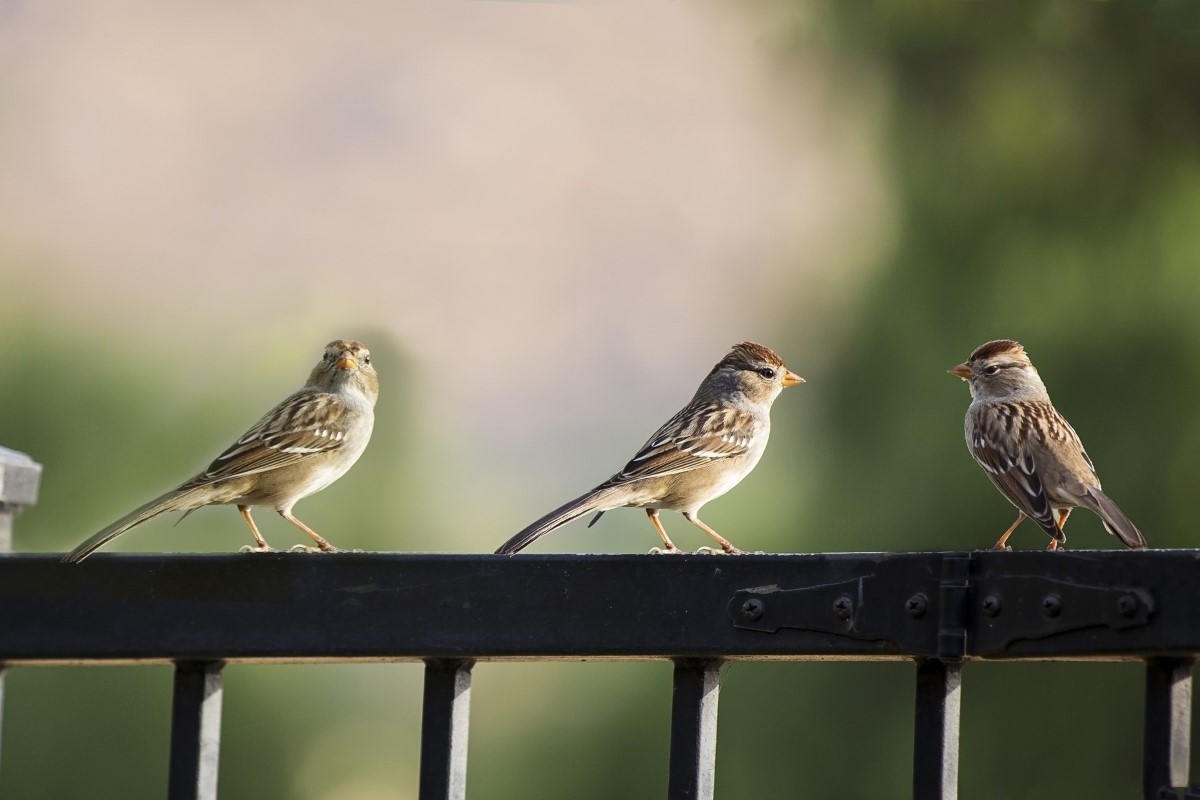

We may earn revenue from the products available on this page and participate in affiliate programs. Learn More ›
Birds sleeping on porches carry symbolic meanings of peace, protection, and good fortune—harmony with nature and tranquility. But many bird-loving homeowners would prefer to keep birds away from their porch. They can be messy and destructive, and their droppings can be a harbinger of disease.
“Birds love porches because they offer shelter,” says Martin Orefice, CEO of Rent to Own Labs Atlanta. Porches provide shelter from wind, rain, and predators, offering shade from harsh sun, a buffer from winds, and warmth during cold weather. They are often conveniently located near water or food sources, and they can usually provide good roosting sites.
“Birds are especially problematic around porches near swimming pools,” notes Rafi Friedman, president of Coastal Luxury Outdoors. “Pool water is not suitable for birds to drink, and they tend to leave droppings and feathers in the pool.”
Encouraging birds to stay away from your porch doesn’t mean chasing them off your property or harming them in any way. There are many safe and effective ways to keep birds off the porch.
1. Move the bird feeder.
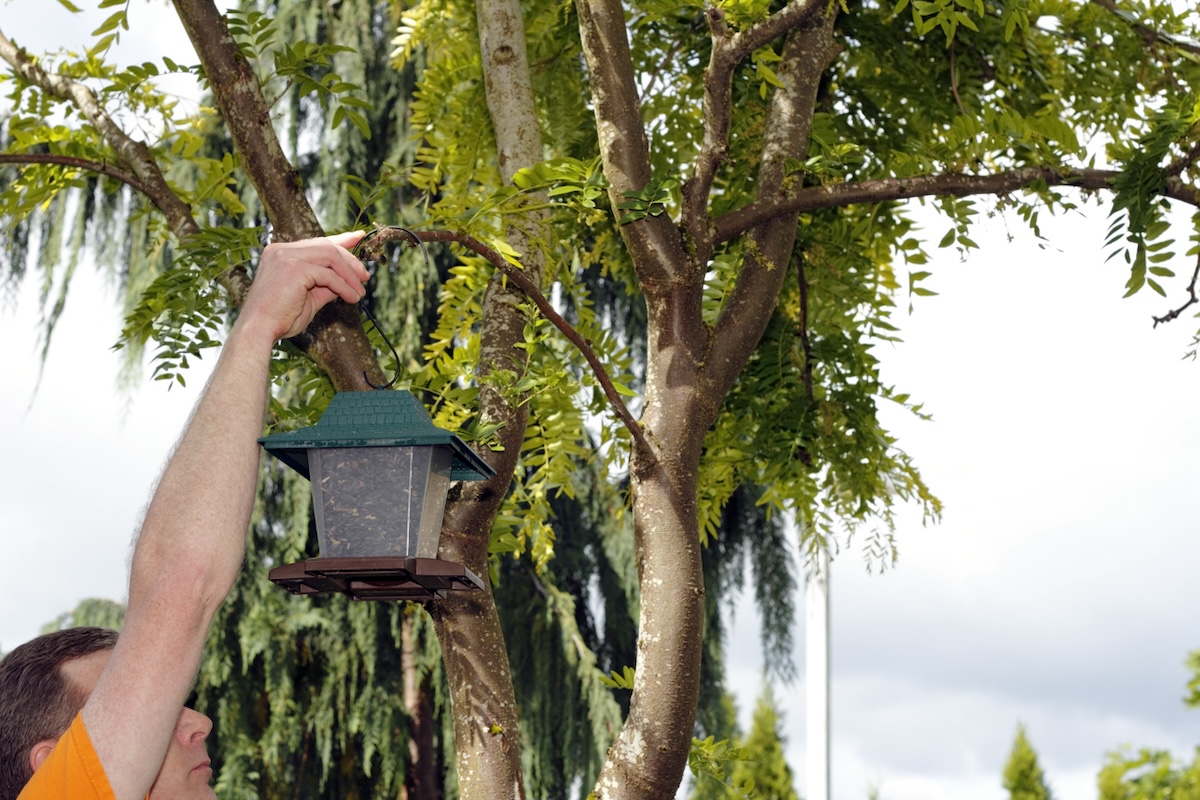
“Food is often the number one thing that attracts birds to porches,” states Jeremy Yamaguchi, CEO of Lawn Love. That food could be crumbs dropped from meals enjoyed on your porch, garbage located on or near the porch, or a bird feeder.
One of the best things to keep birds away is making your porch less convenient as a feeding station. As Yamaguchi says, “You want to make sure that you don’t have any food scraps, trash cans, or any other source of food on your porch, as those are going to be what attracts birds in the first place.”
Moving bird feeders to locations in your yard farther away from the porch—or removing feeders altogether—can make your porch less inviting. The same goes for bird baths, either move them farther away or remove them entirely.
RELATED: 6 Birds That Get Their Coloring From the Food They Eat and What to Feed Them
2. Remove nests and nesting materials.
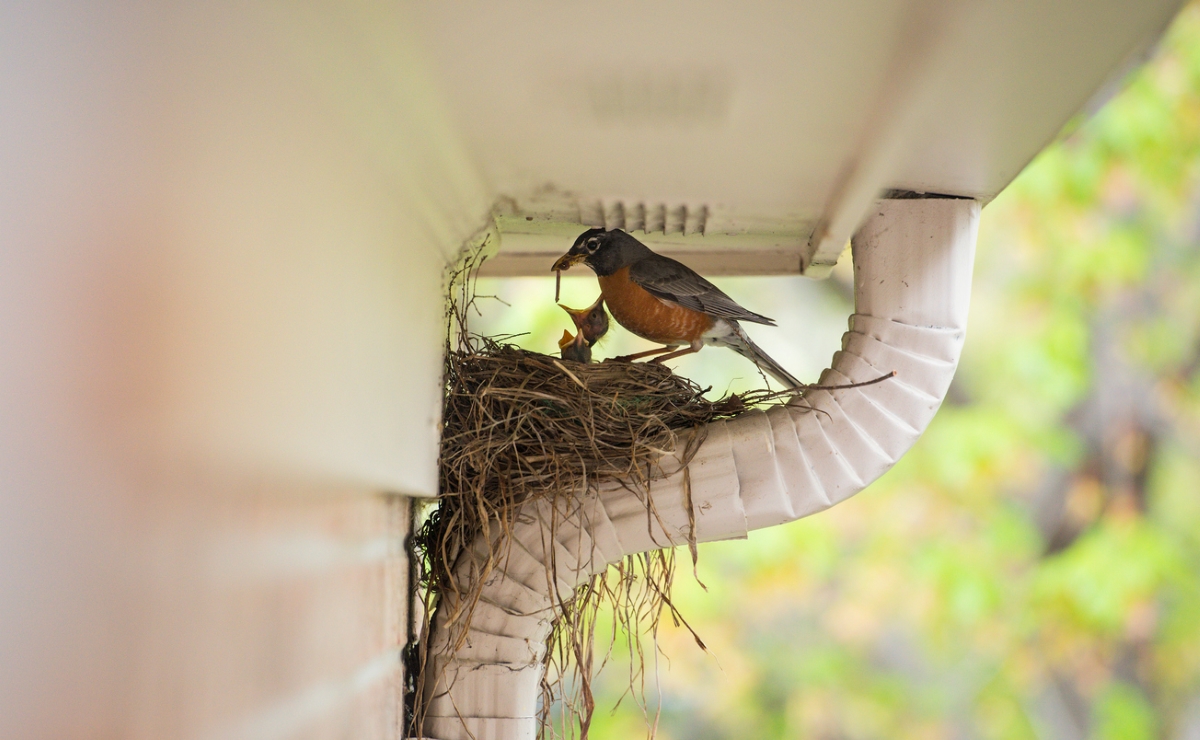
While most active bird nests are protected under the Migratory Bird Treaty Act of 1918, bird nest removal is usually allowed once it has become an empty nest. But check local laws before disturbing a nest to see if you need a permit and make sure you aren’t breaking any rules regarding its removal.
Removing bird nests is relatively simple—it’s a matter of picking it up and getting rid of it (or relocating it). Wear gloves when handling an abandoned nest to avoid spreading germs. Either relocate the nest to a safe place or toss it in the trash. After it’s been removed, sanitize the area where it was.
Bird nest prevention measures should be put in place to keep birds from rebuilding. To prevent birds from nesting on your porch again, remove nesting materials from the area, such as twigs, leaves, and even trash.
3. Provide alternate housing.

Give birds a better place to stay by putting up birdhouses. Research what type of birdhouse matches the species you’re trying to relocate before tackling this project. Cavity-nesting species prefer a nesting box, but you’ll need to know the required size of the house and entry hole, the proper height, and the best location for the species.
Planting ornamental trees and shrubs away from your porch is another way to lure birds to more lucrative shelter and nesting places, especially if they are part of a dense canopy featuring vertical layering that is near a water source and a food source. Native plants are the best choice because they’re well-suited to your climate and many of them provide food for birds.
RELATED: The Best Place to Hang Bird Feeders for Safety and Optimal Viewing
4. Plant natural repellents.

Try a natural bird repellent: planting things near your porch that are unpleasant to birds, such as marigolds, peppermint, citronella, mint, garlic, and peppers. These plants have strong scents that birds dislike and tend to avoid.
Daffodils contain a toxin birds evade, so planting them near your porch is a natural repellent for birds. Likewise, planting thorny shrubs can discourage birds from visiting.
White and brightly colored flowers can be a visual deterrent because they make birds more vulnerable to predators, so birds tend to avoid them.
If you can’t plant anything, consider purchasing essential oils derived from these plants and dropping or spraying them on your porch.
5. Deter birds with devices.
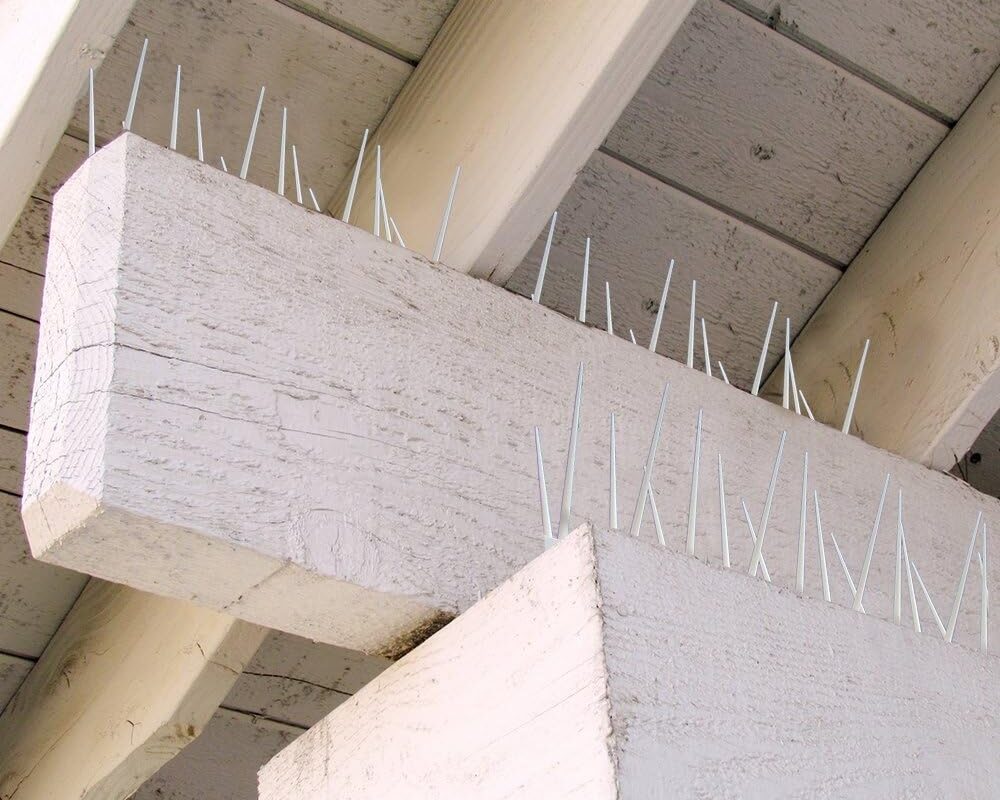
Many products will create a physical barrier that discourages birds from hanging around your porch, such as spikes and rods. Spikes keep birds from roosting and can be used as a bird nest deterrent by not allowing enough flat surface to build a nest upon, while rods prevent them from landing on surfaces by confusing them with a shiny or sparkly surface. Similarly, gels make surfaces too slippery or gooey to land on.
Deterrents come in other forms, too. Battery- or solar-powered motion-sensitive devices that emit high-frequency noise can deter birds. The ultrasonic sound waves “work on everything from rodents to reptiles to birds by making noises higher than humans can detect whenever something moves nearby,” Friedman says. Situating them close to favorite nesting sites will encourage birds to look elsewhere.” Similarly, motion-activated sprinklers can chase away birds by shooting a blast of water at them if they try to land.
6. Scare them away.
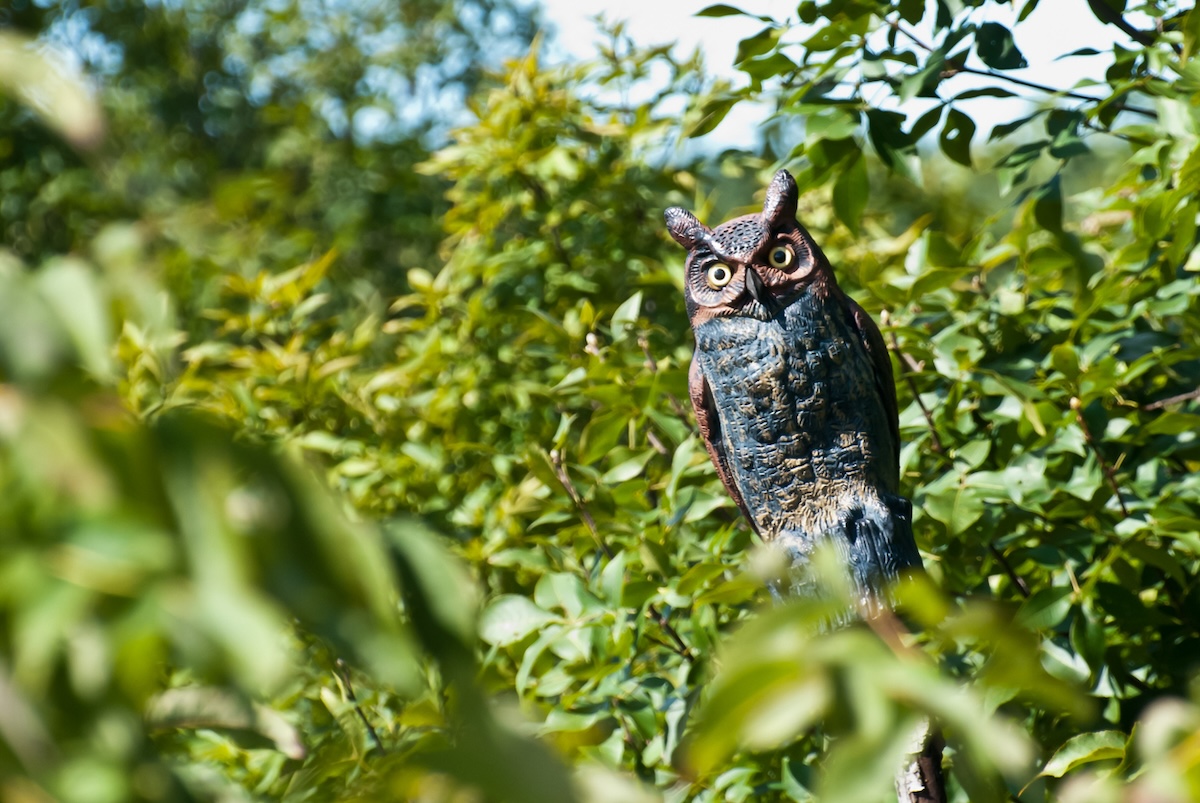
Fake owls and fake snakes can sometimes scare birds away. “Sculptures of owls, and often plastic figurines of other birds, are generally pretty effective at deterring birds,” Yamaguchi says. Many of the fake owls are made of lightweight plastic, which is easy to mount strategically. Some battery-powered varieties feature illuminated eyes, turning heads, and even owl sounds to add further believability and intimidation.
Hanging anything shiny, such as reflective tape or mirrors, even something as simple as aluminum foil or a string of old CDs, is an inexpensive way of keeping birds at bay without harm. Birds don’t like the reflections and light bouncing off them.
Wind chimes combine reflection with movement and noise to frighten away birds. Changing out your porch lights for bright white lights that don’t emit heat or adding strobe lights are other sources of irritation to birds.
RELATED: 12 Fun Facts You Never Knew About Cardinals
7. Prevent entry.
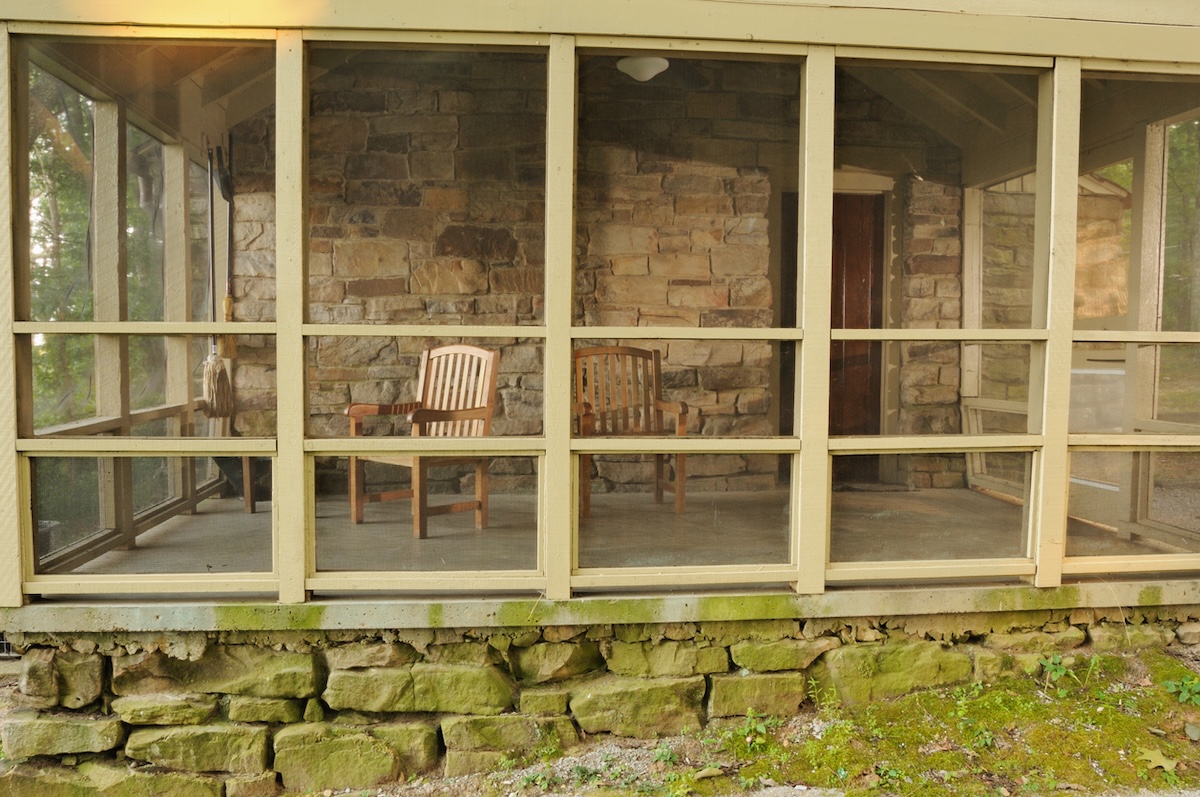
It’s easier to stop birds from coming to your porch than it is to convince them to leave once they’re there.
“If you can manage it, the best way to keep birds from nesting on your porch is to screen the porch in,” Orefice believes. “It’s safer for birds than glass windows, and much more attractive than things like anti-nesting spikes, fake owls, or loud noisemakers.”
A screened-in porch also protects you from irritating bugs while keeping the birds at bay. Hanging bird netting or heavy plastic strips to block birds but not humans is a less permanent solution.
Seal your house to completely prevent birds and other pests from getting in. Silicone caulk blocks off small areas and bird netting or hardware cloth can be used to cover larger areas. Be sure to cover eaves and the underside of rafters to prevent birds from roosting and nesting. You may even want to put netting over plants known to attract birds.
